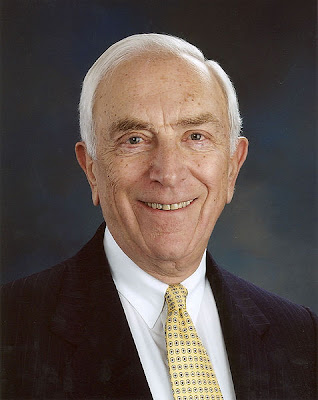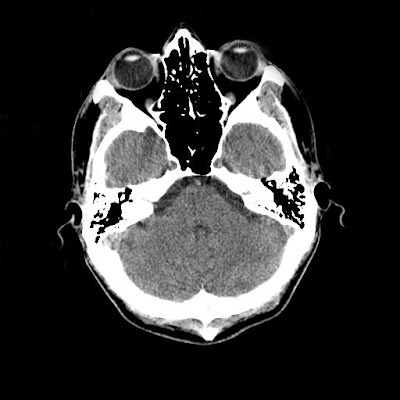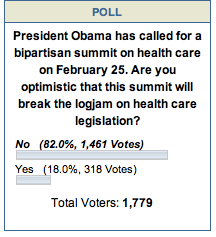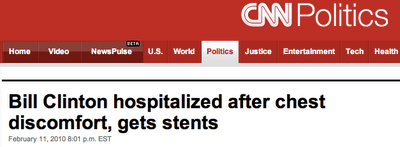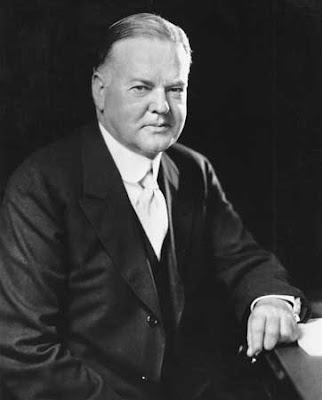
The Center for Medicine in the Public Interest (CMPI) held its second annual Odyssey Award Gala Thursday night, and amidst all the discussion of health policy and medicine, here was one mega-topic on the program: Hope.
Sadly, hope is in short supply in Washington these days. On healthcare, which was supposed to be the signature agenda item of the Obama administration, as well as the Democratic majority in Congress, we now see that both the executive and legislative branches are thoroughly bogged down in unpopular bureaucratese. Leaders on both ends of Pennsylvania Avenue are still trying to pass healthcare "reform" that the American people manifestly do not want. What the American people do want health, but health is not what Washington is interested in advancing. Yes, that seems strange, but Washington is a strange town.
And so one had to go outside the Beltway, all the way to the Hyatt Regency in Morristown NJ, to see people--including prominent politicians--talking about health, and hope. Former New Jersey Congressman Mike Ferguson serving as the emcee, reminded the audience that New Jersey is “the medicine chest for the world" as he introduced Governor Chris Christie, who accepted the first of two the two Odyssey Awards that CMPI bestowed that night.
The bulk of Christie's speech concerned New Jersey issues; the freshman governor, elected on a reform agenda, is rightly determined to improve the Garden State's less than verdant business climate, not only for life-sciences companies, but for all other entrepreneurs and firms in the state. As Christie said, his goal "is to make New Jersey a magnet for people like you . . . people doing truly heroic work.”
The next speaker was John Crowley, whose story is worthy of Hollywood. When two of his three children were diagnosed with Pompe’s Disease--a neuromuscular wasting disease that usually kills its victims in adolescence--he quit his job and started a company to seek a cure. In fact, Hollywood did make a movie out of his story, “Extraordinary Measures,” released in January. I wrote about the film, for Foxnews.com.
As Crowley, now the CEO of Amicus Therapeutics, in Cranbury, NJ said, the cure for dread diseases will only arrive when the various players in the field “come together.” That is, the private sector, the regulators, such as the FDA, the grant-makers, such as the NIH, plus philanthropists, plus patient groups. Different players may have different agendas, even competing agendas, but there must be an overall sense of purpose--the sort of purpose that a great New Jerseyan, Alexander Hamilton, articulated more than two centuries ago.
In the same purposeful and inclusive spirit, Crowley started, at his various companies, sessions he called “lunch and learn,” where disease activists--including those ill with the disease--could come to his corporate campus and share their experiences. By putting human faces on the challenge, Crowley could remind himself and his coworkers what their work was all about.
And more than a quarter-century ago, in 1982, Crowley continued, a man named Maurice Klugman heard about the activist efforts of a Connecticut woman, Abbey Meyers, agitating on behalf of her son and all others who suffered from Tourette’s Syndrome. Maurice Klugman told his actor brother, Jack Klugman, then the star of a popular TV medical drama, “Quincy.” The issue of "orphan drugs"--drugs that might serve too small a market to be commercially viable without special incentives--was thus raised on an October 1982 episode of "Quincy." That TV show, Crowley recalled, stampeded both Congress and the White House to enact and sign the Orphan Drug Act into law in January 1983. And since then, he added, the number of “orphan drugs” has risen from just a dozen to more than 300.
Indeed, Crowley continued, some 30 million Americans suffer from one or more of some 7,000 obscure diseases; in fact, more Americans suffer from all those obscure diseases than from cancer. Seven thousand different diseases? That total sounds daunting, although, of course, many of these diseases are clustered into categories--digestive, neuromuscular, and so on--and past experience shows that if one if progress is made on one disease, progress is likely to be made on many similar diseases.
Finally, Crowley recalled one visit to a biotech conference where the speaker, a quadriplegic, said, "'Biotech' is a great big word that means ‘hope,’” and then he added, added, “You give me hope, you give everyone hope." The speaker was the late Christopher Reeve, who died in 2004, never having recovered from a 1995 spinal cord injury.
By dwelling on hope, Crowley underscored a huge bifurcation in American life today: In Washington, politicians speak in a dry and chilly language of technocracy, which only thinly disguises the real agenda, which is cost-cutting. Meanwhile, out in the rest of the country, ordinary people worry about their health, and about medicine and treatments. And in some places, such as Morristown NJ, they even talk about cures.
Indeed, the bifurcation was all the more glaring on Thursday, February 25, 2010. In Washington DC, on that same day, the White House convened a seven-hour talkathon on health insurance. The result? Most likely, nothing. And yet later that same Thursday, hundreds of miles to the north, a much different conversation took place.
As Robert Goldberg, co-founder of CMPI, along with Peter Pitts, observed at the Odyssey Awards Gala, when politicians in Washington "talk about healthcare as ‘controlling costs,’ they forget the transformative power of cures.” Exactly. Cures are not only popular for their lifesaving potential, they are not only good business in places such as New Jersey, but they are also money-savers for the government, because healthy people cost less, and produce more, than sick people.
Indeed, the economic potential in health was underscored by the second Odyssey Award winner of the evening, Dr. Frank Douglas, who has enjoyed a long and varied career in the medical and pharma world, and is now the President and CEO of the Austen BioInnovation Institute in Akron, OH.
The Austen BioInnovation Institute is a consortium—including Akron Children's Hospital, Akron General Health System, Northeastern Ohio Universities Colleges of Medicine and Pharmacy, Summa Health System and The University of Akron--focusing on orthopedic research, taking advantage of Akron's longstanding leadership in the field of polymers. Polymers are the molecular origin of Akron's legendary rubber industry, but polymers are also the building blocks of life itself. As Douglas observed, "We're all made of polymers."
In other words, there's hope, too, in Akron, and everywhere else where smart and well-meaning people are coming together to create better cures and treatments and therapies. A look back at more than two centuries of research and development in the US remind us of the Hamiltonian wisdom: If talented people come together, as Crowley says, good things are sure to happen.
And that's solid ground for hope, out beyond the Beltway, even as Washington sinks deeper in its self-made morass.

